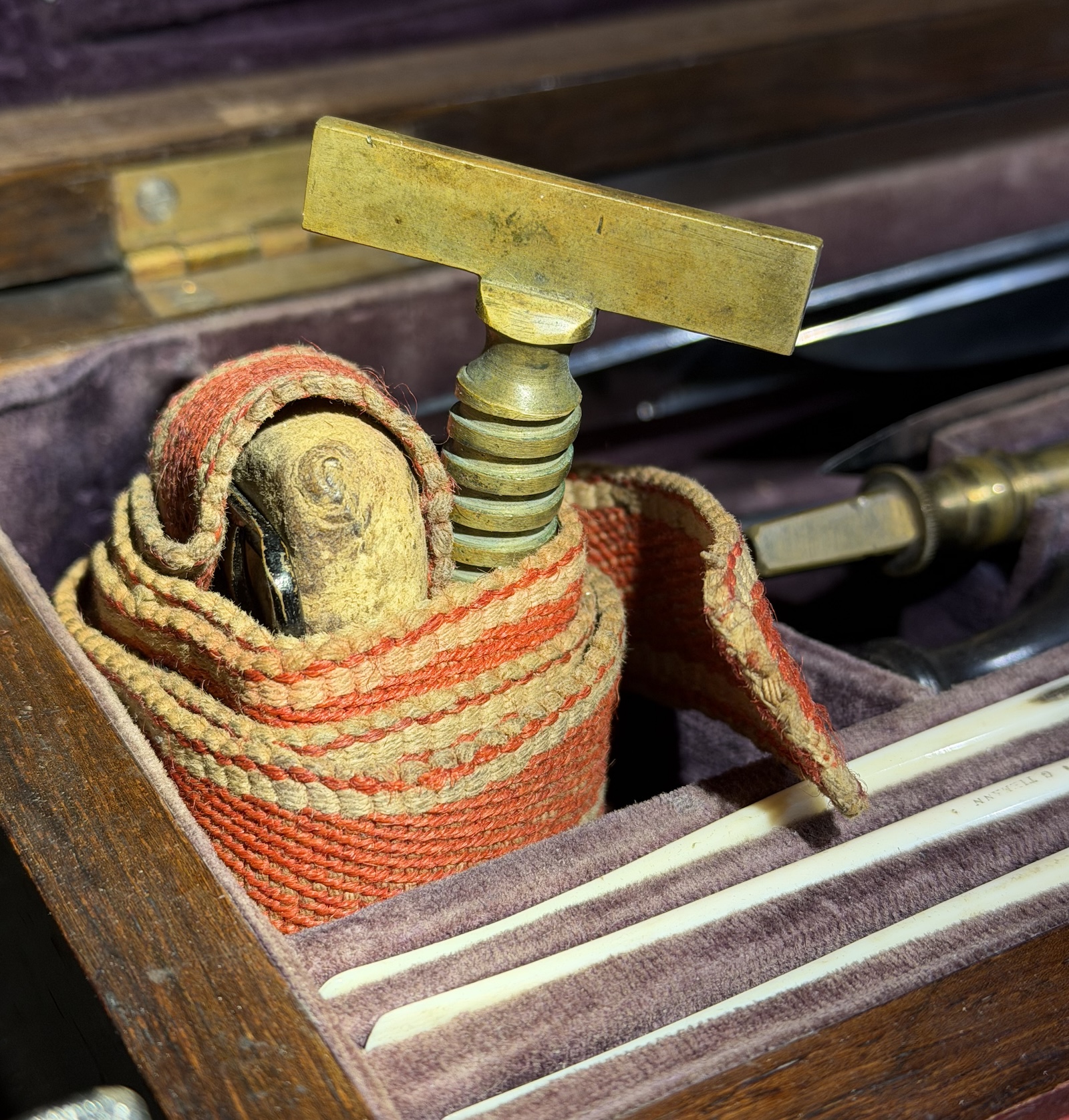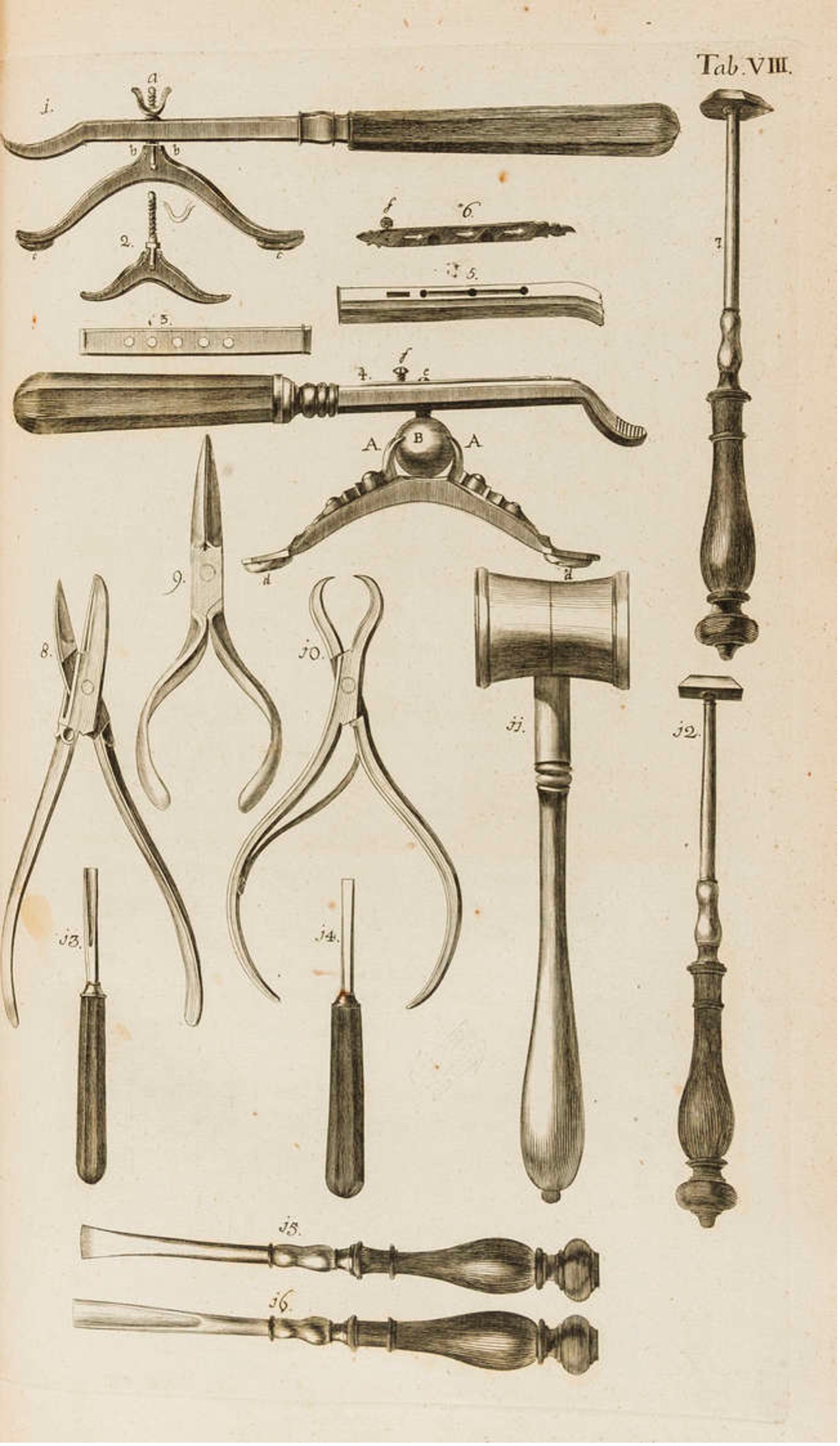Fake lancet – triple disappointment
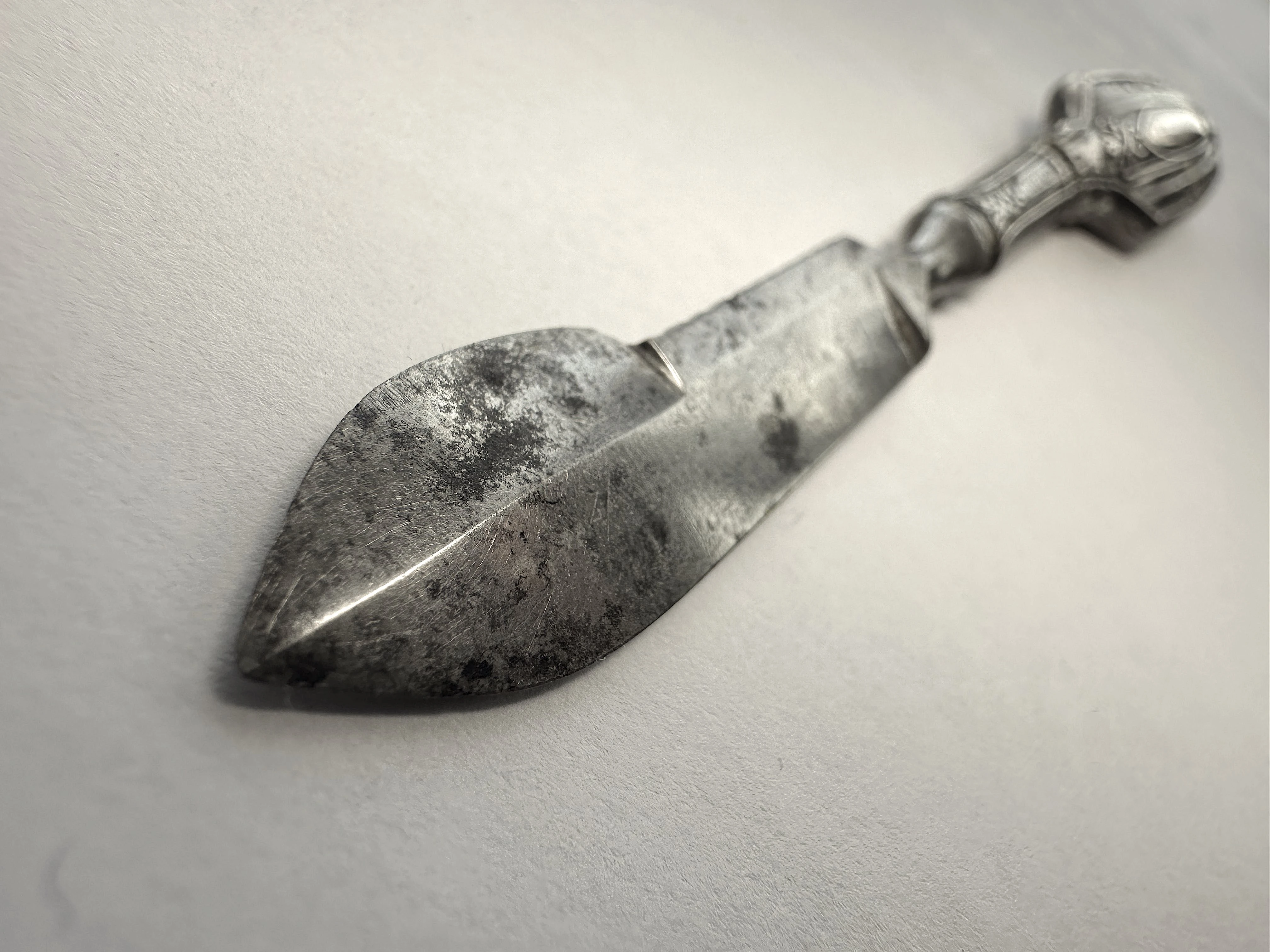
Everyone who deals with antiques sooner or later encounters fakes, collectors of surgical instruments and medical historians are no exception. One of the most frequently counterfeited, or rather issued with fake description – is the lancet, perhaps the most commonly used instrument of the surgeon up to the beginning of the 20th century. The classic antique surgical lancet was an instrument used for opening abscesses, phlebotomy (bloodletting) and other procedures requiring a precise and minimal incision. In appearance, it resembled a small, thin, pointed, double-edged knife that allowed the doctor to make clean and precise incisions.
The materials used to make the blades of ancient surgical lancets varied depending on the time and place of manufacture, but they were mostly made of steel or silver, as well as later added "German silver". The most common material for lancet blades was steel, as it provided the necessary sharpness and durability. Steel blades could be sharpened to a high degree of sharpness and retain it for a long time. Silver was sometimes used to make lancets due to its non-corrosive properties and believed healing powers, making it the material of choice for medical instruments. German silver, also known as nickel silver, is a copper alloy with formulation of 60% copper, 20% nickel, and 20% zinc – as you see despite its name, German silver does not contain any silver; the name comes from its appearance. This material was developed in Germany around 1820 as a cheaper alternative to real silver, and it became widely used for a variety of objects, including cutlery, jewelry, musical instruments, and fittings.
Purchases from unverified sources often accompany novice collectors who are not properly experienced and qualified. This is why auctions, including online platforms, often feature descriptions such as "antique medical lancet - surgical bloodletting instrument". Often the instruments are labelled as silver or plated silver, which was a common material in the 18th and 20th centuries for making both cutlery and surgical instruments.
One such instrument on a common online auction platform was described as a "Antique Victorian Sterling Silver Medical Bloodletting Tool Bleeder Fleam", the acquisition of which was accompanied by three disappointments.

Disappointment 1. Not silver
Upon receipt of the package in the mail (acquired on 05.Jul.2021 via a well-known online auction platform, seller from California, USA), the item was inspected. The tool is made of silver-like material, has a floral and scroll design, the blade has a dull serrated section. The shaft is marked "Sterling" and possibly "N&H" on both sides. It measures approximately 11.8 x 1.7 x 0.8 cm and weighs 13 grams.
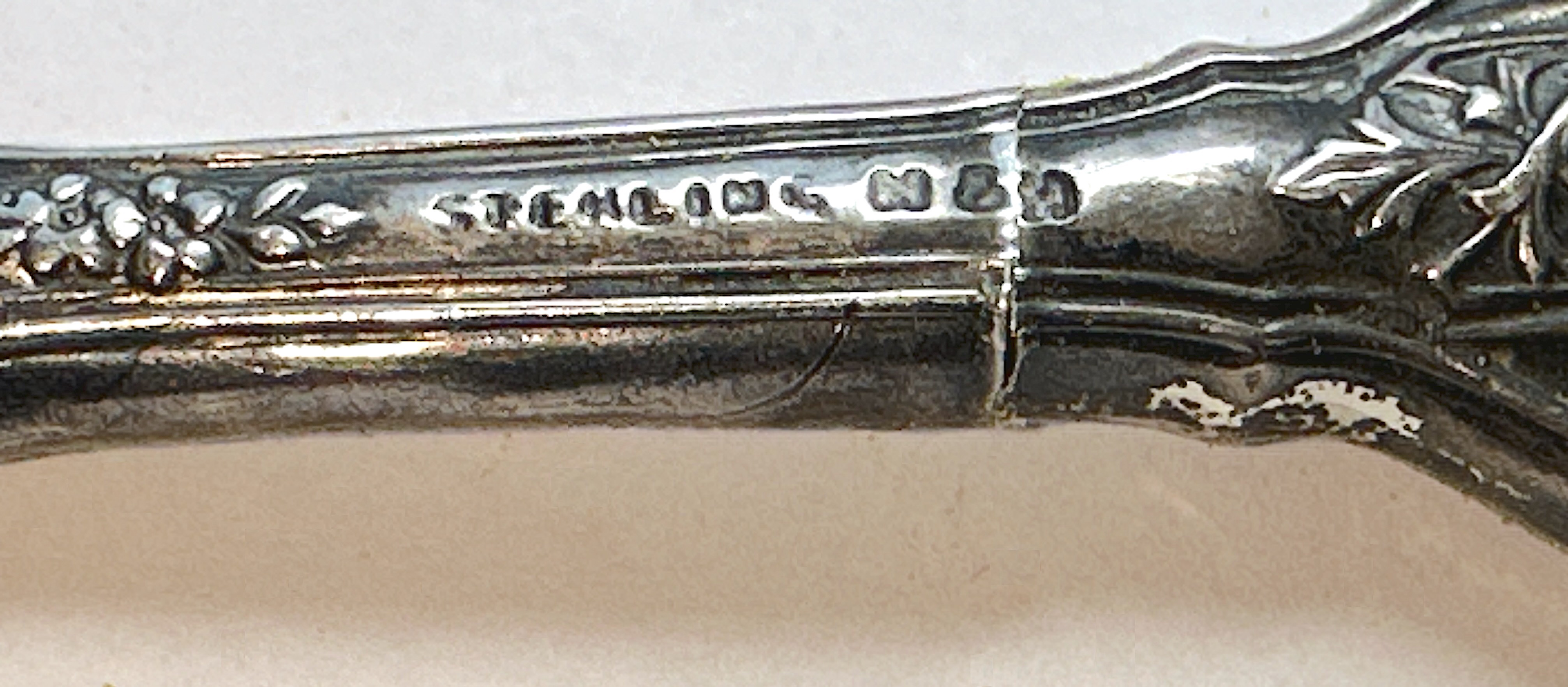
An initial close examination of the instrument raised doubts as to whether the material of which it was made was silver. Distinguishing silver from silver-like materials such as German silver (nickel silver) or stainless steel can be difficult without the right techniques and knowledge. However, there are several ways to distinguish silver from other metals.
The first, and simplest, is the presence of the assay hallmark, which usually contains not only the appropriate emblem, but also figures regulating the percentage of pure silver. For example, the number 925 indicates a 92.5 per cent proportion of sterling silver. The second method is the use of a magnet. If the product is magnetised, it means that it contains iron, cobalt, nickel rather then silver. The other method would require regular ice, such as from the freezer. Due to the very high thermal conductivity of silver, if you put ice on it, it starts to melt quickly, almost immediately. This effect is more pronounced with silver than many other "silvery" alloys, though metals like copper can also exhibit a similar rapid melting of ice due to their high thermal conductivity. One can make a sound test (silver makes bell-like sound) – but this can be rather applicable for coins not to the instruments. Finally, a nitric acid test can be fulfilled. A small scratch or file mark is made on the item in an inconspicuous place. When a drop of concentrated nitric acid is applied to the mark, pure silver reacts with nitric acid to produce a creamy, white precipitate of silver nitrate and other by other metals the reaction may produce a greenish color. The same principle is realized in so called silver testing kit – you can easily acquire it at Amazon or elsewhere. When a drop of this solution is placed on the silver item, the color change indicates the purity: a red color might indicate a high-purity silver, while green may suggest a lower purity or the presence of other metals.
So, this particular "sterling silver lancet" lacked a jewellery hallmark and did not pass other tests.
Disappointment 2. Not a lancet
After some research it become clear that the shape of the instrument's blade does not match the form of a lancet – one side of the blade was straight and sharp, and the other side was convex, rugose, passing closer to the hilt into a straight part with small serrations, teeth. Instead, it closely resembles a vintage ink eraser or scraper, which was a common tool used before the widespread availability of erasable pens and correction fluids. These ink erasers were designed to physically remove ink from paper. The sharp straight side was used for scraping or shaving off ink from the surface of the paper. The sharp edge allowed for precision in removing unwanted ink without tearing the paper. A convex side of the blade served to remove the wax seal by sliding a thin curved blade under the edge of the wax seal without tearing or cutting the paper. Once the blade was under the seal, the user could gently lift or pry the seal off. The curvature and the sharpness of the blade was key to its functionality, allowing it to navigate the typically uneven surface of a wax seal without causing damage to the paper. Its serrated straight part, which followed the serrated blade closer to the handle, was designed for opening sealed envelopes by cutting the paper – the serrations easily sawed through the paper at the fold. So, this ink eraser can be used as a letter opener.
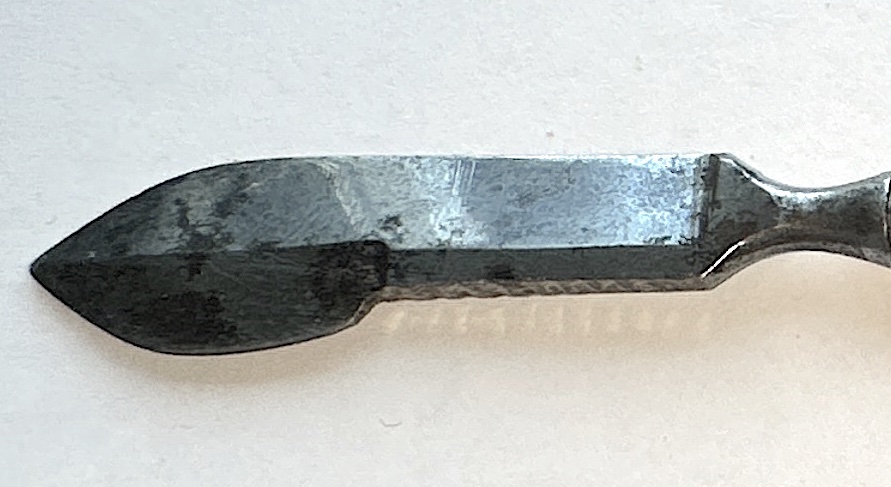
Such tools are often advertised at online-auction platforms as 'Surgical Scalpels', 'Blood-Letting Lancets', 'Civil War Scalpels', or 'Found on the Battlefield'. As the number of antique ink erasers far outweighs the number of lancets, such descriptions attract more attention and generate more profit for the unscrupulous or uninformed seller.
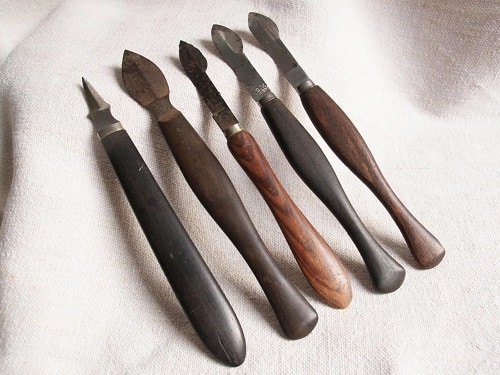
French made ink erasers, 19th century. From the article by Douglas Arbittier, MD, MBA
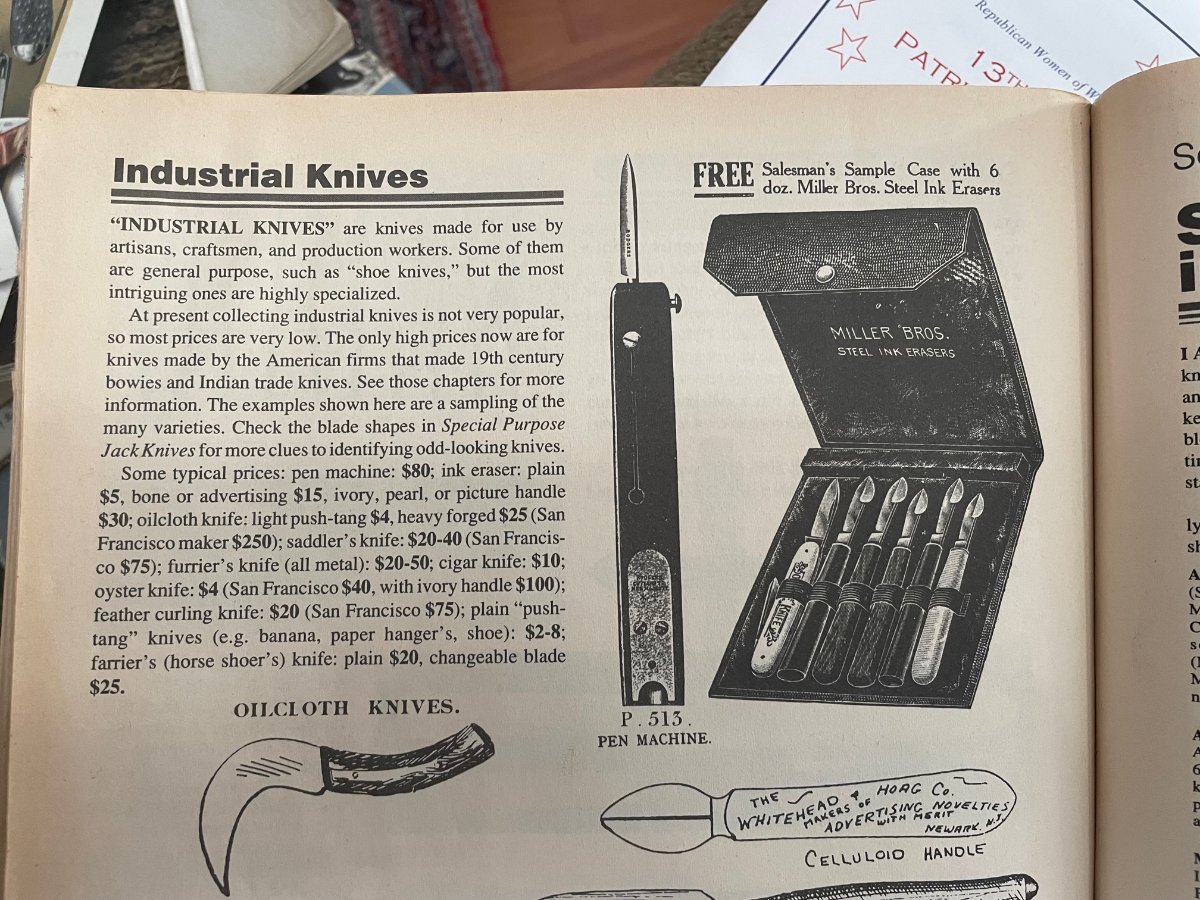
Illustration given by the user Ridgegrass, at allaboutpocketknives.com
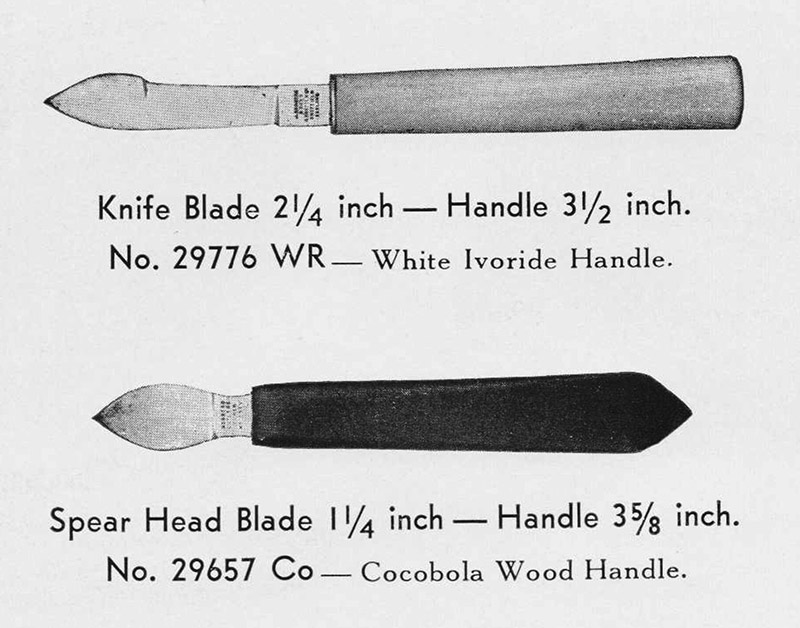
Two metal ink erasers used to scrape dried ink writing on paper. These were used in an office context in the early 20th century, when most correspondence and record keeping were still done with ink and steel-nibbed pens. Source: wikipedia.org

Some of them even have exact word describing their function – on the neck of the blade inscribed "WARDS ERASER S.W.C.C." (which probably stands for Swan Works Cutlery Co.). Source: r8shell at bladeforums.com,
Thus, the specimen presented was not a lancet, but a rather unusual victorian ink eraser, paper knife.
Disappointment 3. Not even all metal
The third disappointment, or better saying discovery was that this instrument wasn't even completely made of metal. After several years of using the for its purpose, as a letter opener, suddenly one day, as a result of a little more pressure, the handle of the tool broke off. It appeared that the tool was not solid metal, but filled with a yellowish substance like sand.
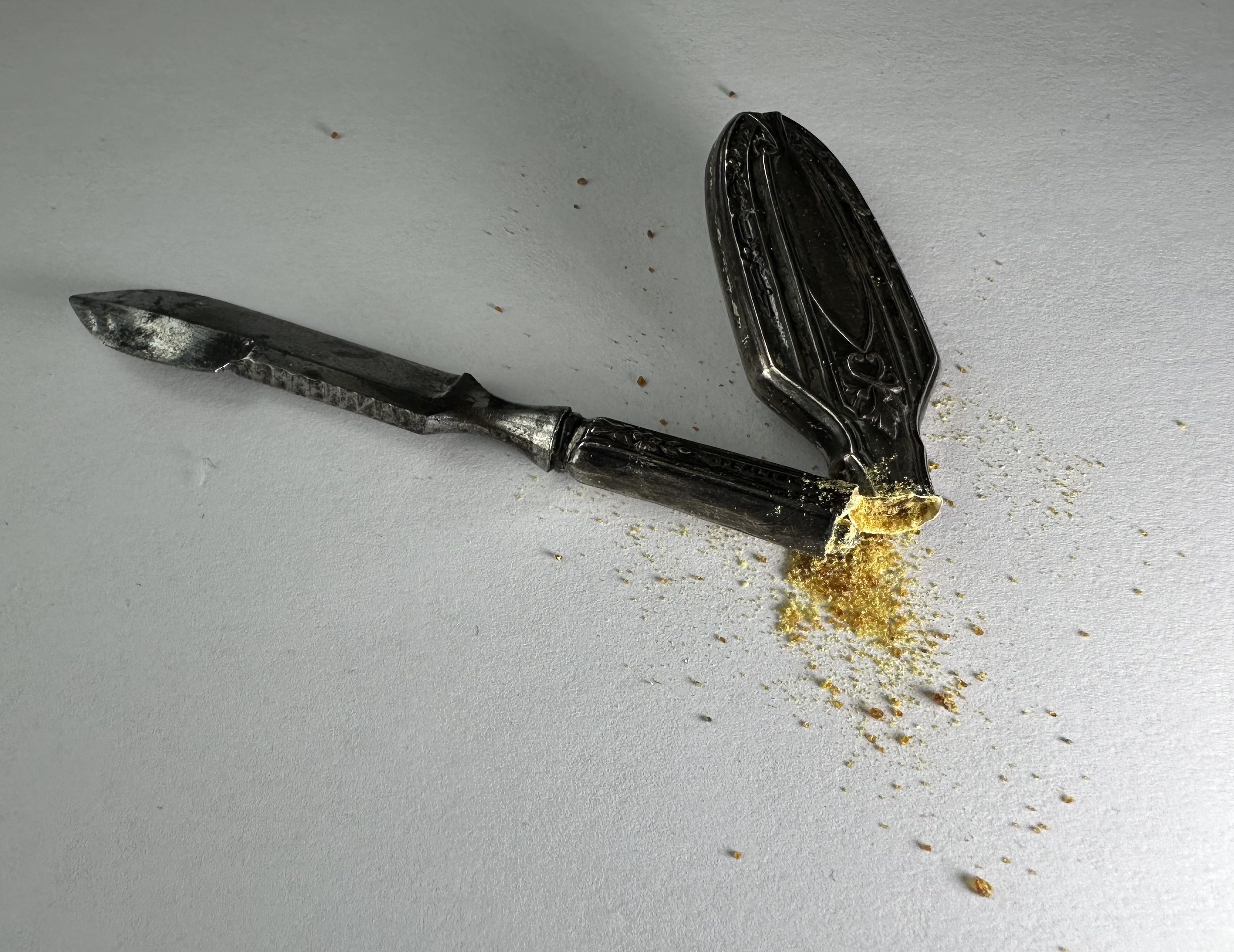
Such manufacturing technique is called shellac pouring or shellac casting.
In the 19th and early 20th centuries, this method was often used to make knife handles, including stationery knives, and other items with a decorative metallic coating "like silver". The metal body of the item was made from a cheaper metal and then plated with silver or other noble metal to give the item a more valuable and attractive appearance. The inside of the case was filled with a mixture based on shellac, a natural resinous substance derived from the secretions of the female lac bug on trees in the forests of India and Thailand. Shellac ("lacquer made by shells") was known and used in Europe since 16th century, and was valued not only for its adhesive or isolation properties, but also for its ability to create a strong, shock and vibration resistant filling. This technique allowed for the creation of elegant and relatively inexpensive pieces that could simulate fully metal objects in appearance. This technique was widespread before the mass introduction of modern polymer materials and injection moulding technologies.
Thus, the presented specimen is not a "Antique Victorian Sterling Silver Medical Bloodletting Tool Bleeder Fleam", but a ink eraser, made in the late 19th - early 20th century of metallic alloy under silver with a filling of shellac.
